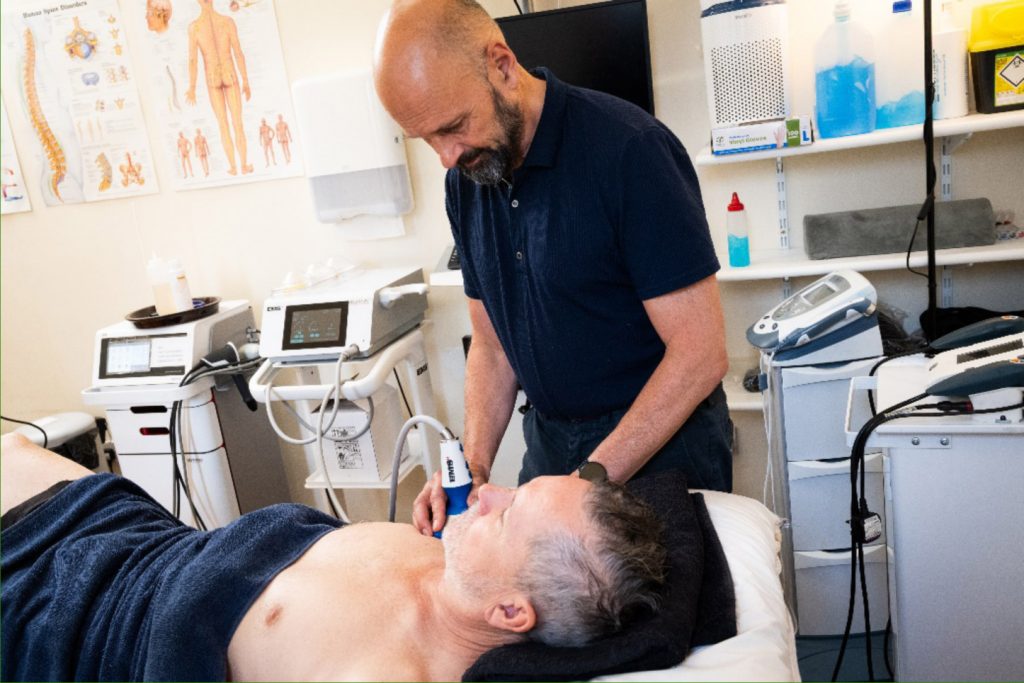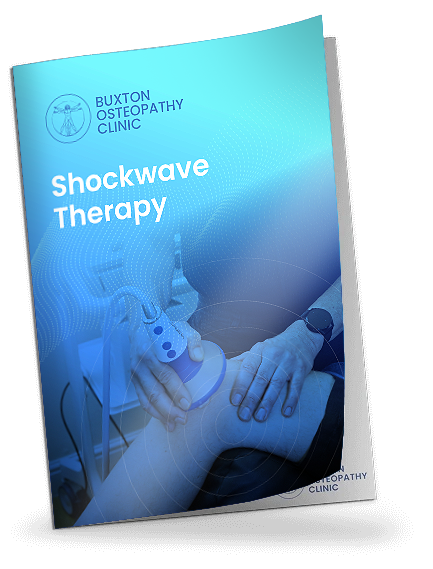Lower Back Pain Explained: Causes, Anatomy, and How Buxton & Bakewell Osteopathy Clinic Leads the Way in Advanced Treatment
Lower back pain is one of the most common health problems worldwide and one of the top reasons people miss work or limit daily activities. For some, it begins as a dull ache after long hours sitting at a desk; for others, it strikes sharply, making even simple movements difficult.
At Buxton & Bakewell Osteopathy Clinic, we specialise in diagnosing, treating, and preventing lower back pain using a combination of expert hands-on care and cutting-edge technology. Our clinics are recognised throughout Derbyshire and the
Peak District for providing effective, evidence-based solutions that go far beyond quick fixes.•
•
Understanding the Anatomy of the Lower Back
The lower back — or lumbar spine — is a complex structure of bones, discs, joints, muscles, and ligaments. Together, these components provide strength, flexibility, and stability for everyday movement.

- Vertebrae (L1–L5): These five bones form the foundation of your spine and protect the spinal cord.
- Intervertebral Discs: Soft, gel-filled cushions between vertebrae act as shock absorbers, allowing smooth motion while protecting the spine from impact.
- Facet Joints: Small joints at the back of the spine guide movement and prevent excessive rotation or bending.
- Muscles & Ligaments: Deep core muscles such as the multifidus, erector spinae, and transverse abdominis provide strength and support. Ligaments bind the vertebrae and prevent excessive movement.
- Nerves: The spinal cord branches into nerve roots that exit the lower back to supply the legs and feet — irritation here can lead to sciatica or referred pain.•
Because these structures are so interconnected, dysfunction in one area often leads to compensations or strain elsewhere. That’s why a detailed, whole-body assessment is essential to pinpoint the true cause of pain — something our osteopaths specialise in.
•
The Major Causes of Lower Back Pain
Lower back pain can arise from a variety of sources, often involving a combination of mechanical, postural, and degenerative factors.
1. Muscular and Soft-Tissue Strain
Sudden movements, poor lifting technique, or overuse can strain the muscles and connective tissues of the lower back, leading to inflammation and protective spasm.
2. Postural Dysfunction
Long hours spent sitting — often with rounded shoulders and a slumped pelvis — can weaken the core muscles and overload the lumbar joints, creating chronic tension and stiffness.
3. Degenerative Disc Disease and Arthritis
As we age, the discs lose hydration and elasticity. This natural wear-and-tear process can reduce space between vertebrae, irritate nerves, and cause ongoing discomfort or stiffness.
4. Disc Bulge or Herniation
When a disc protrudes or ruptures, the inner gel material can press on a nearby nerve root, producing shooting pain, numbness, or tingling sensations down the leg (commonly known as sciatica).
5. Facet Joint Irritation
Small joints linking each vertebra can become inflamed through overuse or misalignment, often causing pain that worsens with extension or twisting.
6. Pelvic and Sacroiliac Dysfunction
Uneven loading of the pelvis — due to leg-length differences, pregnancy, or muscle imbalance — can transmit strain directly into the lower spine.
•
•
How We Treat Lower Back Pain Differently
At Buxton & Bakewell Osteopathy Clinic, we don’t simply treat the symptoms — we look deeper to find why your back hurts. Every patient begins with a comprehensive osteopathic assessment, examining posture, spinal mobility, muscle tone, and biomechanics. From there, we create a tailored treatment plan that may combine:
•
- Hands-on osteopathic techniques to restore mobility and release muscular tension
- Rehabilitation exercise programmes to strengthen support muscles and improve posture
- Lifestyle and ergonomic advice to prevent recurrence
- Cutting-edge technology such as IDD Therapy and Shockwave Therapy, offering faster, longer-lasting results
•
•

IDD Therapy — The Future of Spinal Decompression
IDD Therapy (Intervertebral Differential Dynamics) is a breakthrough in non-surgical spinal treatment. Using advanced computer-controlled technology, it gently stretches targeted spinal segments, decompressing discs and relieving pressure on trapped nerves.•
Benefits of IDD Therapy
- Reduces disc bulges and herniations by improving fluid exchange
- Restores normal joint spacing and movement
- Encourages healing of damaged discs and soft tissue
- Relieves sciatica and chronic lower back pain without injections or surgery
•
Our clinic is among the few in the region equipped with certified IDD Therapy technology, enabling us to treat even complex cases that haven’t responded to traditional manual therapy.
•
•
Shockwave Therapy — Accelerating Natural Healing
Another powerful treatment we offer is Shockwave Therapy — both Focused and Radial. This non-invasive technique delivers high-energy acoustic waves to affected tissues, stimulating cell repair, increasing blood flow, and breaking down chronic scar tissue.
How Shockwave Therapy Helps Lower Back Pain:
- Reduces muscle spasm and tightness
- Promotes new tissue regeneration
- Decreases inflammation and pain
- Improves mobility and function
•
When combined with osteopathic care, Shockwave Therapy offers remarkable improvements for chronic muscular and ligamentous back pain, often reducing the need for medication or invasive procedures.
•
Why Buxton & Bakewell Osteopathy Clinic Stands Apart
Expertise and Experience
Our team of highly qualified osteopaths has decades of combined experience treating complex spinal and musculoskeletal conditions. We continually invest in postgraduate training and research to ensure our patients receive the highest level of evidence-based care.
Advanced Technology, Local Accessibility
Few clinics in Derbyshire offer both IDD Therapy and Focused Shockwave Therapy — and fewer still integrate them with osteopathic expertise. This unique combination allows us to treat the root causes of pain with exceptional precision.
Personalised, Whole-Body Approach
We recognise that every back is different. Our treatments are tailored to your specific anatomy, activity level, and lifestyle, ensuring optimal results and long-term prevention.
Trusted Community Reputation
With clinics in Buxton and Bakewell, we’ve built a reputation as the go-to specialists for lower back pain across the Peak District. Our patients include office workers, athletes, and those who simply want to move without pain again.
Results That Last
Our goal isn’t temporary relief — it’s lasting change. Through a combination of manual therapy, technology, and guided rehabilitation, we help you achieve true, sustainable recovery.
•
Your Path to a Healthier, Pain-Free Back
•








